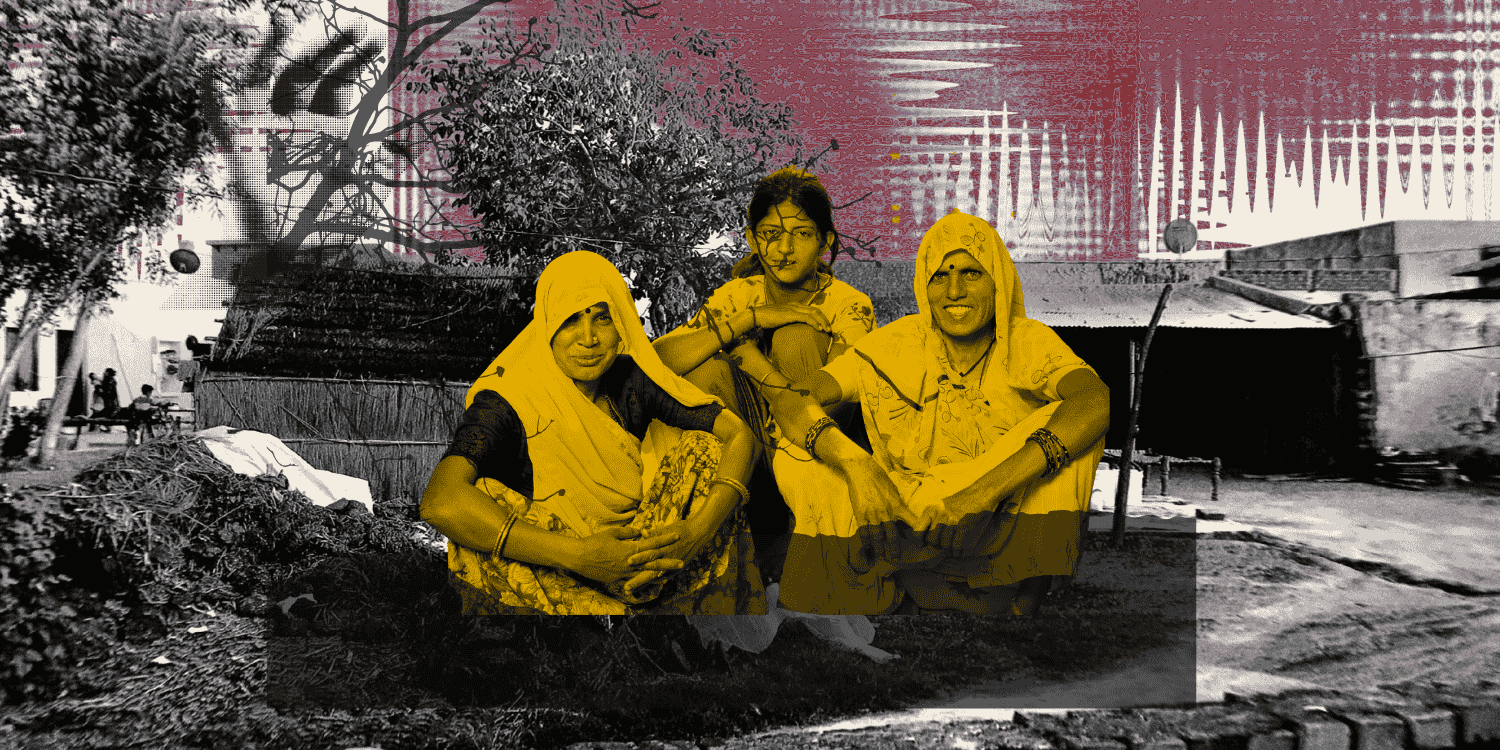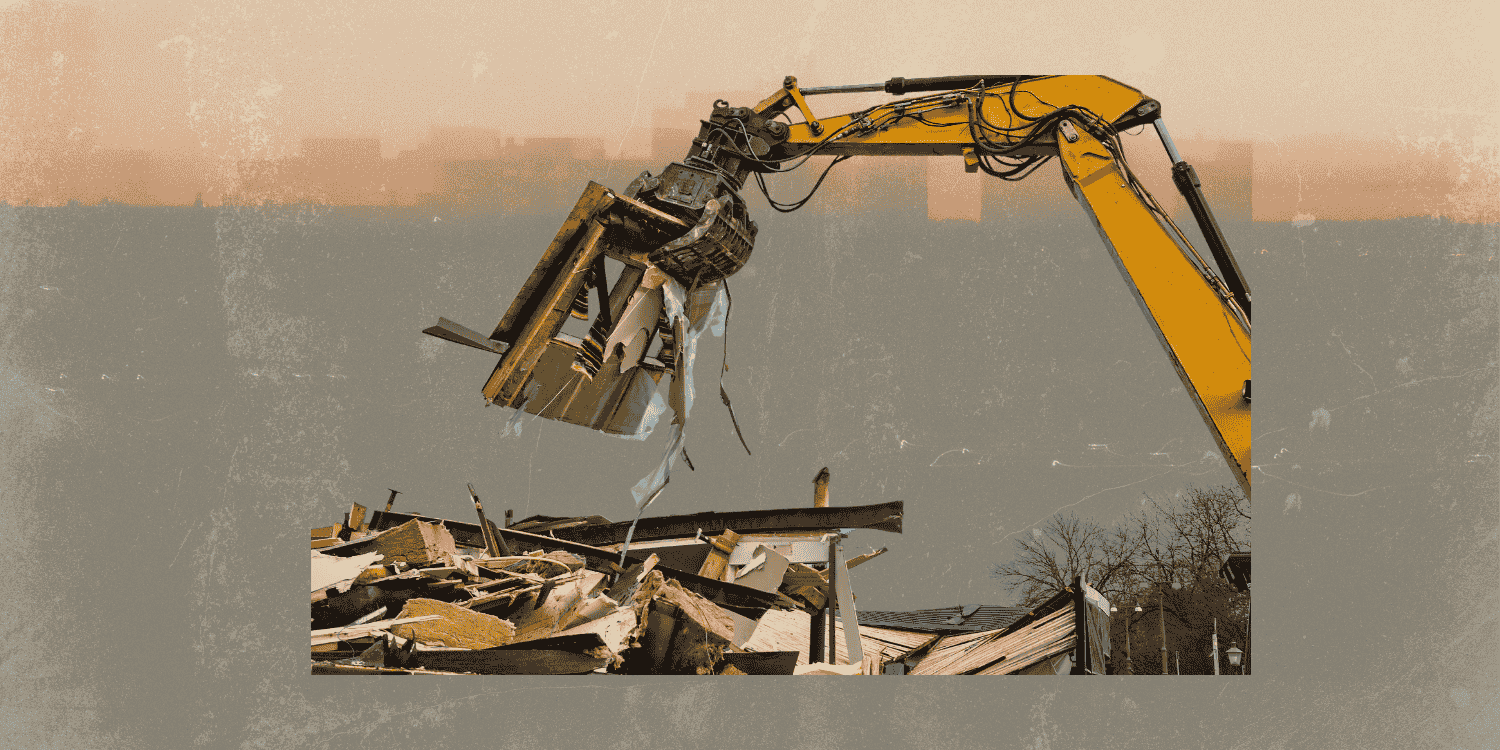Abstract:
The Darjeeling Hills of North Bengal have an economy that is highly dependent on tea and tourism, both of which employ a significant population of the region. At the same time, challenges of population growth, tourism induced crowding and traffic, political movements, global shifts in demand for Darjeeling tea and climate change have led to rising socio-economic challenges for the local population of the hills. This paper discusses the “Dutch Disease” effect for the Darjeeling Hills, and argues that an over-reliance on tea and tourism has made the workforce non-competitive, while keeping wages and well being stagnant. The Dutch Disease refers to when a highly specialised economy based on a core resource enters a crisis when the market or core resource for that economy is threatened. Due to overreliance and specialisation, the economy is not diverse enough for alternative employment and capital accumulation, leading to persistent socio-economic challenges for the population. The paper argues that the nature of the Darjeeling economy has resulted in lands and labour being leveraged only for tourism or tea, and as those sectors face challenges, the workforce and society is unable to find better and more high paying work. The paper discusses how land rights still have not been secured for tea workers, and how this acts as a basis for labour flight and socio-political underconfidence in the State Administration. Finally, the paper suggests diversification and industrialisation, with a brief comparison with the neighbouring economy of the state of Sikkim.
Introduction
Standing out as an idyllic hill station rivalling those of Europe, the Darjeeling hills of North Bengal, in the state of West Bengal, are synonymous with tea and affordable tourism. The slopes of the Darjeeling hills are full of numerous plantations growing the world-renowned Darjeeling tea, which received a GI (Geographical Indication) tag in 2003. The Darjeeling, Kurseong and Kalimpong Districts (colloquially referred to together as the Darjeeling Hills) were established as a leisure and government outpost by the British in the late 1800s and have since become a valued region for West Bengal, bringing in significant tourism and tea revenue. However, the romanticism of the hills and the plantations may be lost on the locals, whose lives rely on tourism and the global tea industry. In recent years, the hills have been under significant pressure of unemployment, climate change and stagnation, even as tourism remains high and Darjeeling tea remains world famous. The benefits of glamorous tourism and the much-coveted tea, perhaps, do not enrich and improve the lives of the locals and only benefit an elite class of travellers and plantation owners. The story of the Darjeeling hills, then, is of a region that lies at the mercy of outward-facing market forces. Development is undertaken only to further the interests of visitors, or those who own the plantations. This article argues how the tea and tourism industry in the Darjeeling hills loosely points towards a potential “Dutch Disease”, a term from the 1970s, which colloquially describes the phenomenon wherein the natural riches and resources of an area negatively impact the local socio-economic life of the region.
“Dutch Disease” refers to a situation where sudden discoveries of natural resources lead to a country becoming very rich very fast, resulting in the other aspects of the economy, not allied with the core resource, being underdeveloped. The Dutch Disease has been used to refer to the discovery of oil in Britain, Venezuela’s oil economy, and the mining of phosphate in Nauru, to cite a few examples. In all these instances, the overemphasis of a key core resource (oil or phosphate), created an economy and a society that over-specialised in that resource. As a result, once the core-resource economy was threatened, the overall economic and social situation worsened due to a lack of diversification. In the case of Darjeeling, this article argues that a loose form of the Dutch Disease can be seen through two core resources–tea and tourism. While the Darjeeling hills do not have their own currency and are embedded in the larger state and national economy, the article refrains from discussing the impact of tea and tourism on currency. However, the analysis describes how the reliance of the hills on the two resources has led to stagnation and vulnerability for the local population.
Scholars have widely discussed the role of tourism as Dutch Disease, wherein a tourism-facing economy tends to over-specialise development that benefits tourists while largely ignoring the development of activities that benefit the local population. Tourism is a non-tradable sector, meaning that its consumption in the case of Darjeeling can only occur in the hills itself, and not away from the region. This aspect of tourism results in economies making tourism facing capital and asset expenditure, which implies that land and other resources in Darjeeling tend to prefer being leveraged for tourism instead of for local needs. At the same time, the tea industry in India falls under the plantation sector and employs a considerable number of local people in the hills. As a plantation classification, it is typically characterised by cheap and abundant labour, making it labour-intensive, with crops grown mainly for profit on large farms and for an export market. The plantation sector also involves the use of heavy capital for processing and distributing to markets, and there is little to no emphasis on cultivation for consumption. Thus, the tea industry in Darjeeling is a major employer of locals (besides tourism) and a significant consumer of land resources. The tea industry uses land for plantations that could otherwise be used for agriculture, forests or other non-exporting commercial activities. Both tea and tourism in Darjeeling exhibit a key feature of Dutch Disease, where land and other natural resources are leveraged to pursue a core export or activity, away from other commercial or consumption practices. While this has resulted in a burgeoning tourism and tea industry, it leaves the hill economy vulnerable to shocks in these sectors. That seems to be the case currently, as tea plantations in Darjeeling have begun shutting down due to shifts in global demand, increased competition and rising input costs. At the same time, the tourism sector is struggling due to overcrowding, resource constraints and environmental carrying capacity.
The Burden of Tea and Tourism: Weak Property Rights, Over Specialised Employment and Immobility of Labour
The tourism industry in the Darjeeling hills relies heavily on visitors from the plains of West Bengal, especially during the hot summer months. Almost 80-90% of the low to middle-income tourists in Darjeeling come from within the state itself, resulting in the need for the industry to provide a range of services across different costs to cater to the different income classes that make their way to the region. This significantly differs from the British and post-colonial years, where only the wealthy elite could travel and spend considerably in the region. With increasing incomes and a burgeoning middle class since the late 20th century, the region has had to adapt rapidly to absorb the growing influx of low to middle-income tourists. However, the hasty expansion has led to issues of resource distribution, overcrowding and traffic congestion, all of which have adversely affected the local community. Of course, there are the general issues of tourism that revolve around littering, environmental harm and resource usage. But this article focuses on the phenomenon that has seen the leveraging of land, labour, forest and resources to meet the needs of tourists at the behest of the local population–these are not challenges of tourism per se, but are conditions that enable and prioritise tourism. Most of the non-tea labour in Darjeeling depends solely on the tourism industry, resulting in low wages and high competition among locals to serve this sector. As a result, the youth are forced into jobs with little to no upward social mobility in the informal and semi-formal hospitality sector.
Compared to other sectors, scholarship regarding labour socio-economic mobility has shown that labour tends to be relatively immobile in the hospitality sector. This is pertinently true for the Darjeeling hills; generations of families upskill themselves only to the point where it is deemed attractive enough for tourists. This would typically include physical skills such as driving, cooking and logistics, and soft skills such as speaking in the tourists’ languages. While these skills allow tourism labour to meet the sector’s needs, it makes labour highly unspecialised and competitive in the general labour market. As a result, the youth are forced to either out-migrate for better opportunities or continue the trend of working in tourism, as that is both the only available option as well as the only career in which they are skilled. Thus, the worker’s bargaining power is weakened due to a large body of unspecialised labour. The low to middle-income tourism sector is also highly different from the elite high-income hospitality industry–the former has more lax qualitative demands and can often take on a semi-formal nature, fostered through interpersonal interactions between tourists and workers. As a result, the sector spirals–weaker qualitative demands means a weakening need for specialisation, leading to greater labour competition and then to lower wages and more affordable tourist options.
However, the above can be said for any tourism sector in any part of the world. It is important to reiterate how, for Darjeeling, tourism is the only expansive sector other than tea–and how land and resources are diverted to serve both. The discussion so far has discussed how tourism leads to the overspecialisation of certain skills and the underdevelopment of non-tourism specific industries, services and jobs. Notably, tourism in Darjeeling is also prone to political and environmental shocks, which can rapidly paralyse the whole economy. Such instances have been more common in recent years, where the 100-day strike in 2017, the COVID-19 pandemic, heavy monsoons in 2021 and 2022, and landslide concerns have left the hills suddenly cut off and unable to cope. Economic life halted significantly during the pandemic, and the low to middle-income and informal options were the most affected. However, in the post-Covid surge, there has been an opposite effect–overcrowding of tourists and traffic, leading to a conflict with the needs of the local community. The post-Covid tourism boom has seen more and more diversion of lands and forest cover towards tourism, while locals have also moved further down the hillside. There has also been a significant increase in hotel development, often at the expense of urban mobility in the area. The conversion of farming land for cheap homestays has also seen issues in water distribution, with much of the water resources being leveraged for hospitality needs.
The situation is even more dire for the tea industry in Darjeeling, with numerous tea gardens shutting down or slashing wages in recent years. The tea industry roughly uses about 17,500 hectares of land, predominantly situated on the easily accessible hillsides and slopes. These tea plantations date back to the beginning of tea cultivation in the late 1800s, and post-independence, most of the plantations changed hands to wealthy elites from the plains. The tea industry of the Hills, Terai and Dooars region has a population of 11,24,907, of which 2,62,426 are permanent workers in tea and more than 70,000 are casual workers. More than 50% of the workers in tea are women, who are predominantly tasked with plucking the leaves from the hilly slopes. Darjeeling’s tea industry used to produce around 110 lakh kg of tea around a decade ago, which dropped to 67 lakh kg in 2021. The tea industry has rapidly declined due to various factors, ranging from political agitation, climate change and shifts in global demand. Almost half of Darjeeling’s tea plantations are currently up for sale, as old owners no longer find it profitable. India’s free trade agreement with Nepal has also led to a significant dip in Darjeeling tea exports, as Nepal tea is cheaper and has found a significant market inside India. Darjeeling tea has classically been exported to the global market, which has recently begun diversifying and buying from other countries as well.

Image 1: Site Suitability Map for Agriculture in the Darjeeling Hills. The map on the left shows the suitable area for agriculture, and the map on the right shows the suitable lands after removing lands locked in vegetation and tea cultivation. Source: Site suitability analysis for agricultural land use of Darjeeling district using AHP and GIS techniques.
Image 1 above shows the available land and its suitability for cultivation and agriculture in the Darjeeling Hills (Kurseong, Kalimpong and Darjiling). While there is generally a greater degree of suitable land on the left, the image on the right shows the extent to which land has been leveraged for tea cultivation, after vegetation has been accounted for. Most of the highly suitable lands have been leveraged for tea, and the remaining land has limited suitability for agriculture. Siliguri, or the plains, provide the only viable agricultural alternative, but this is far away and not particularly easy for agricultural workers to travel between the hills and plains on a regular basis.
As tea is part of the plantation sector, the state of West Bengal owns the land and leases it to companies for 10 to 30-year licences. The workers and their families have lived on the land in the plantations for generations and sent family members to work in lieu of retaining their homes. Since the families do not have title rights or parja-patta, the workers have limited to no rights or bargaining power and are often faced with the choice of continuing poorly paid work in tea or leaving the plantation with nowhere else to stay. Notably, Darjeeling was not part of the land reforms or Operation Barga initiated by the Left Front government of West Bengal in the late 1970s due to most of the land being used for plantations or non-agricultural work. As a result, the ceiling surplus land was not redistributed, and the workers on the plantations did not receive ownership of the land on which they live. Due to missing ownership, workers cannot take out loans or get insurance on their houses or property, leaving most to rely on informal credit or move further down in precarity. In 2023, the West Bengal government initiated the process of land distribution among tea workers, but the process has been slow and remains in a state of not having taken off. The stalemate between the tea unions, political parties and tea companies has prevented the conduction of a land census to determine the future of distribution, leaving workers demotivated and under-confident regarding future promises.
In recent years, there has been a rise in tea workers leaving the hills for the plains in search of other jobs or looking for other work in the hills themselves. As discussed earlier, unfortunately, the only other meaningful work available in the hills again is tourism or government-aided schemes such as MGNREGA. In many cases, the plantation workers are not skilled enough for tourism or only have the option of low paid tertiary work in the hospital industry, which, as discussed, is also facing overcrowding and lack of mobility. At the same time, tea company owners have complained of absenteeism of workers, leading to general apathy and discomfort between the workers and the plantation owners. Recently, there have been many instances of delayed or unpaid wages, as well as scrapping of festival bonuses and non-compliance of safety measures. In a more extreme case, several able-bodied workers, mostly men, from Darjeeling have even left for Israel to find menial labour, as competition in the plains and the rest of India remains difficult.
The Way Ahead: Making A Socio-Political Commitment Towards Industry and Diversification
As with many cases of Dutch Disease, the core-resource economy, when faced with an external market shock, is often left suddenly vulnerable. This is due to the magnitude of resources, labour and capital embedded in the core-resource sector, and immediately becomes obsolete and immobile due to a lack of alternative options. The same is pertinently true for tea and tourism in the Darjeeling hills, with there being scarce options except the two, and interchanging between the two is also unfeasible. In such situations, the predominant way forward lies in industrialisation and diversification of the economy while also establishing structures that give workers bargaining power and security of property. A notable comparison can be made with the neighbouring state of Sikkim, which has made significant gains in industrialisation and diversification of its economy. The state was predominantly agricultural in the 1970s until there was a concerted effort to industrialise the state. Over the next decades, several diverse and non-competing industries such as breweries, cosmetics, corrugated boxes and food processing were set up, all of which allowed the local population to develop a diversified workforce with horizontal and vertical labour mobility. Sikkim was on the precipice of catching the Dutch disease, with a soaring population and subsequent pressure to produce tea and agricultural goods. Much of Sikkim’s development also occurred due to rapid improvements in socio-political conditions–the state has seen little ethnic tension in recent years and has a generally high level of literacy. Sikkim has also been politically stable in the past decades, allowing the government to undertake projects that reap benefits over longer terms instead of showing dividends in electoral cycles.
It remains then that West Bengal, in cooperation with the Gorkhaland Territorial Administration, must undertake a significant and committed push to develop and diversify the Darjeeling hills. This endeavour cannot happen through simple policies and laws but through a socio-political system that instils confidence and a sense of cooperation among the state and the people. There is an urgent need for a multidimensional approach towards reviving the Darjeeling hills- securing land rights for tea workers, freeing up land for agriculture and industry, economic diversification and environmental conservation. Some potential industries that can be established in Darjeeling if the above is achieved are bottling plants, food processing and breweries, similar to Sikkim. Additionally, Darjeeling also holds the potential for setting up a film city in the hills, as many Indian movies are shot in the state. A dedicated film city would also create specialised employment, with greater bargaining power, that solely aims at the entertainment sector. A network of regulations and administrative commitment can ensure that the locals are prioritised in the development, implementation and employment of any future industrialisation. Finally, there remains a larger need to have more Darjeeling and locally owned enterprises that may even have operations in the plains. Until then, Darjeeling, or the “Queen of The Hills”, remains in a precarious position- caught between tea and tourism that benefits only those with a temporary and consumerist interest in the region.






